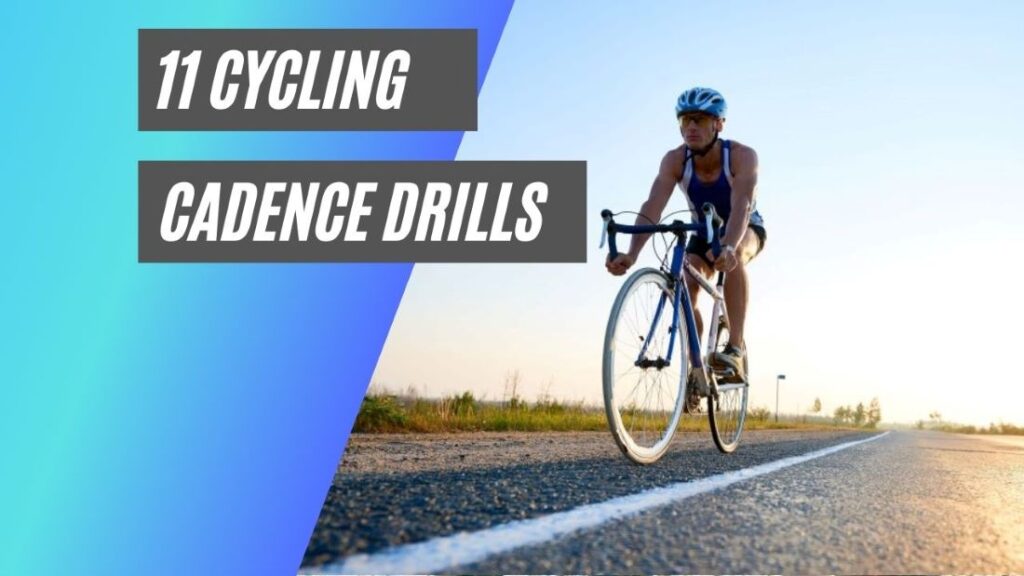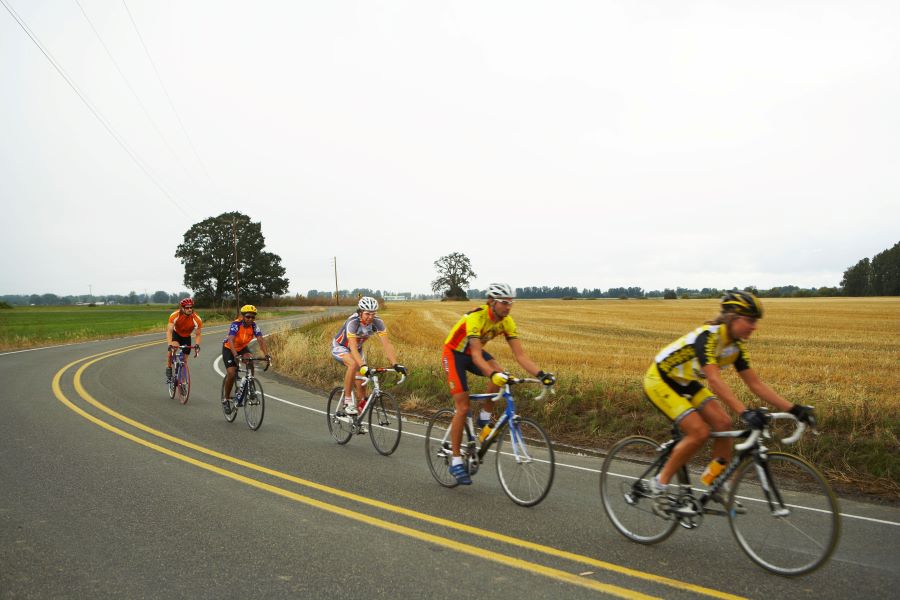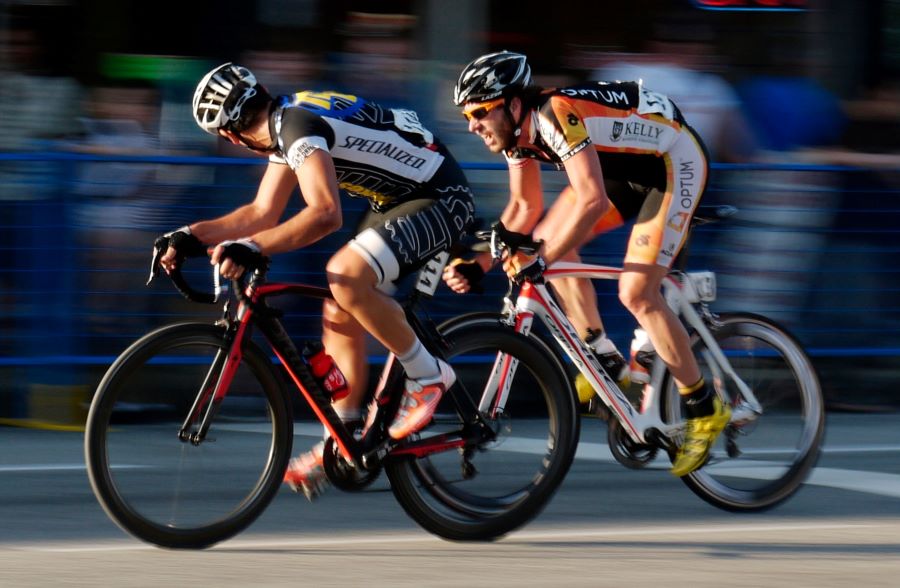This post may contain affiliate links. If you click an affiliate link and make a purchase, I may earn a commission. Also, as an Amazon Associate, I earn from qualifying purchases.--
Cycling cadence can be a very confusing topic for many beginner cyclists. Whether among new triathletes or cycling hobbyists, everyone always wonders what the best cadence drill is and why.
The best cadence drills cover strength endurance, pedaling fluidity and coordination, road racing cadence, sprint cycling cadence, fast pedaling, high-speed seated sprints, and power starts. Some drills could also integrate a metronome or music for timing and rhythm.
If you’re looking to learn more about cycling cadence and their subsequent drills, you’ve come to the right place.
In this post, I’ll discuss:
- What is cadence?
- Why is cadence so important?
- The best 11 cycling cadence drills

What is Cadence?
Before we get to discuss any cadence drills, it’s worth making sure you understand what exactly cadence is.
Put simply, cadence is the number of revolutions your pedals make per minute as you ride. Every cyclist pedals at different rates, so we each have respective cadences. (Source)
If you ever witnessed cycling done by pros, you would probably notice them pedaling very fast on flat courses.
Due to this, it can be determined that professional cadence is usually very high; most often, experienced cyclists pedal on flat surfaces at a rate of 100 revolutions per minute (rpm) or more.
Likewise, climbing uphill would be slower for some, so you can expect a cadence of 60 to 90 rpm for a typical recreational rider.
Why is Cadence Important?
Improving your cadence can have numerous effects on various systems within your body.
For example, increasing your rate in cardiovascular systems results in higher oxygen uptake and cardiac output.
Overall, this can correspond with a more effective skeletal muscle, pumping blood flow into your muscles and increasing the venous return of blood to your heart. (Source)
However, it’s worth knowing cadence must always act upon your abilities and build. If you have a muscular build, you’re more likely to be comfortable at a slower rate, as energy costs exist for turning your legs.
Here is a simple table of the kinds of cadence you want to aim for (according to bodymechanic.com):
| Type of Cyclist | Target Cadence |
| Recreational Cyclist | 60-80 RPM |
| Intermediate Cyclist | 85-90 RPM |
| Elite Cyclist | 90-110 RPM |
11 Cadence Training Drills
That being said, cadence can always be nurtured according to your style and requirements. This is done through frequent training and honing your cycling abilities.
Therefore, to help with that process, I’ve compiled a total of 11 drills for a variety of different circumstances.
1. Strength Endurance
If you’re looking for higher power output, building your strength through cadence drills may be the way to go.
This can be done through two reps of 15-minute blocks. These should be done at a Functional Threshold Power (FTP) of 89 to 90 percent.
And maintaining a cadence of 50 to 60 rpm is also crucial. Ideally, you should keep the rate lower for a higher power. This would create more torque.
If you’re looking to develop your skills, I particularly recommend nudging the power-up and decreasing your cadence over time. Between each block, you should also rest well until full recovery.

2. Fluidity and Coordination
If you want to work on coordination, I recommend four reps of 20-minute sessions. This includes 4 minutes at 120 rpm with a minute at easier cadences.
Throughout this exercise, your body must be as upright as possible. The key is to develop stability as a strong core.
As a result, you should make sure all power transfers come from the waist down.
And, just like the last exercise, I also recommend adequate resting periods. If you’re feeling particularly adventurous, you can even repeat blocks for a second or third time.
3. Sprint Cycling Cadence Drill
This would be more useful in practicing for shorter distances or developing bursts of speed in a race.
I recommend doing this drill after a regular warm-up and upon settling into your ride.
It’s pretty straightforward; all you have to do is reduce the gear or resistance moderately while ramping up your cadence.
I suggest 100 to 120 rpm for about 10 to 20 seconds. You can then perform this drill in 5 to 10 repetitions with around 1 to 2 minutes of rest between reps.
Alternatively, you could also perform this drill without reducing the resistance. However, this would result in a higher intensity for your legs, so you should increase breaks to about three minutes.
4. Iron Man Cadence Drill
Often, this one’s used for long-distance events or practicing for triathlons. Consequently, the exercise focuses on developing running after a bike leg too.
Once you’re warmed up and settled, this drill helps prepare you for long-distance training sessions. The first step of this exercise is to self-assess an adequate rpm.
I suggest choosing based on the split time you’re aiming for, and you can then increase the cadence by 5 rpm progressively. In general, this rate should be comparable to your level of exertion.
You can work on your cadence for a scale of up to 90 rpm, which is the standard amongst professionals.
Although, you can always experiment if you notice improvement or complete longer rides with ease.
5. Road Racing Drill
This drill works well if you’re looking to reduce leg fatigue or increase blood flow to your legs.
It should also be done after a light exercise and upon entering a steady riding state. You can determine your cadence with a measuring device or by simply counting knee raises on a leg per minute.
You should then continuously increase your rate by 50 to 10 rpm per minute.
Afterward, you can refer to a regular cadence for the next minute, repeating this interval throughout your ride and before your cool-down.
On the other hand, you could develop progress by increasing the time spent on a higher cadence by 5 seconds. Or, you could also simply reduce the intensity interval by five seconds.
For example, a workout routine could consist of a regular rpm for one minute, then increased rpm for another minute.
In turn, this would be followed by a standard rpm of one minute and an increased rpm of one minute and five seconds.

6. Power Starting
Another way to increase cadence can involve going against heavy resistance, reinforcing the bike’s mechanics. In particular, the turbulence endured by the bike would help smooth high cadence pedaling.
Similarly, power pedaling is ideal for creating high power in accelerations from slower speeds.
This is done using geared bikes, where you roll to a near standstill at 2-3 mph on more sizable gears.
Then, you should try to focus on core stability upon reaching these speeds. You can do this by preventing your back from rounding while accelerating as powerfully as you can without changing your gears.
I recommend continuing this for about 10 seconds or until your gear spins out. After that, you can do about five to eight reps, with crucial 5-minutes rests between each block.
With that being said, I would like to point out that faster isn’t always better. For cadence training, your drill should help with more than just speed.
Instead, these drills are more to build up different rates to cycle. Through this, you can then effectively produce or reduce power depending on the circumstance.
7. Seated High-speed Sprints
This is a drill best for a downhill section of a road where you can sprint with ease. Ideally, it’s often utilized with medium gears, including the big chainring and the middle of the cassette.
Afterward, use these gears to reach speeds of 15 to 20 mph.
In general, the idea is that you need to go fast enough to pedal at about 90 rpm, with little to no resistance. You need to then stay seated and sprint for at least 20 seconds.
If you end up out of the gear, you should try cycling on another gear in the next block.
Plus, as with any drill, you must rest for about five minutes between sprints and restrict yourself to completing the exercise only 5 to 8 times.
In addition, these seated accelerations are also ideal for races. For example, just standing up and going all out on a bike is a dead giveaway you’re accelerating.
This lets opponents know you’re going to wear yourself out sooner than later. But, if you can rev up your cadence while maintaining a calm upper body and demeanor, you can throw your opponents off-guard.
8. Fast Pedaling
Fast pedaling is exactly what you’d expect.
Generally, the goal is to keep your gear light, resulting in lower resistance. But, at the same time, it shouldn’t be so light that there’s no resistance at all.
Likewise, your upper body needs to be calm, and you should pedal as fast as possible without bouncing off the saddle.
I recommend doing this in three to five 1-minute efforts that can be separated by two minutes of rest at a moderate cadence. After that, you should progress to 3-minute drills with five minutes for recovery between each.
During this period, an increase in heart rate would also be expected. But, I suggest that you keep your RPE at about 5 to 6 out of a scale of 10.
When committing to fast pedaling, a tip to keep in mind is to smooth out your strokes so your feet can move faster without bouncing.
To do this, you should think about kicking your foot forward over the top of the stroke and scraping it back from the bottom.
Over time and through improvement, you can eventually extend efficient portions of your pedal stroke for varying power levels.
9. Metronome Method
As strange as it may sound, the metronomes used in a musical composition can also help a lot of ineffective drills.
In particular, if you’re working on your cadence, there are plenty of free metronome apps you can use while running. This would help develop a rhythm while running, improving your ability to accelerate accessibly.
You can get started with this method through a 10-minute warm-up at a simpler pace. Then, as you get settled with cycling, you can have the metronome set to five steps faster than your typical cadence.
And, upon using a higher rate, you shouldn’t increase the pace any further. You should simply try to maintain this pace while only increasing cadence for stronger and shorter strides.
Then, after a minute at a higher cadence, I recommend raising the rate of your metronome by 8 steps more than the average and running for a further minute.
You can switch between these cadences three to four times, with 10-minute cool-downs between each.
10. Music Drills
If metronomes are a bit too much, you could always just straight up music during training routines. You can try increasing your cadence through uptempo tracks at specified BPMs (beats per minute).
This can simply be done through a Spotify account too, where there are numerous public playlists organized according to BPM.
These can be found on the Spotify mobile through the Search icon at the bottom of the screen. Then, on the Search page, you can just tap on the list of genres and go through “Workout.”
Over here, you’d even find playlists categorized as “Running,” with each playlist having an included BPM range for their music.
Also, as with any exercise, ensure that you start off slow and warm up first. You can then cool down after. And, during the workout, try not to go over five percent of your current rate average, despite how tempting it may be.
11. Single-Leg Focus
With single-leg focus drills, the idea is to develop your ability, allowing you to apply more power effectively. This is done by efficiently utilizing the entire pedal stroke, providing the best complete body exercise.
About 90 seconds should be devoted entirely to one leg for these drills. And, during this period, you should make sure to pay attention to one foot at a time.
You can do this by lightly pulling your foot over the bottom, slightly lifting your knee upward, and then softly kicking your knee over the top.
Pedal like this for about a minute, and then try switching focus to another leg.
That way, each leg would have individual attention and strength.
